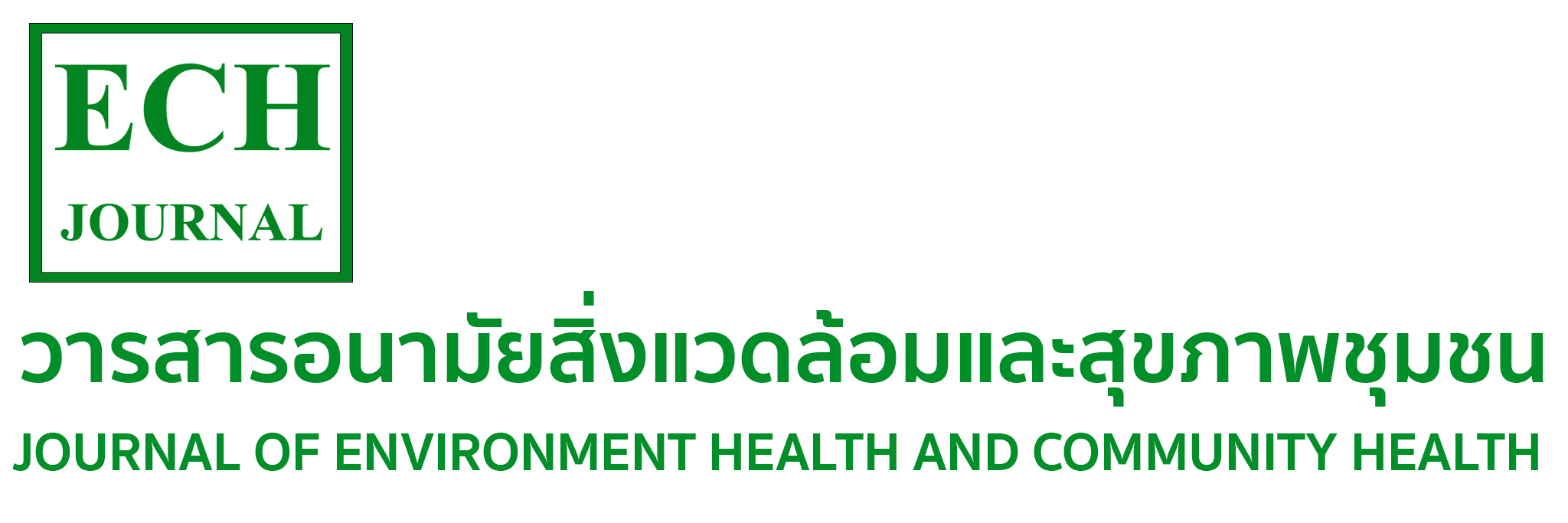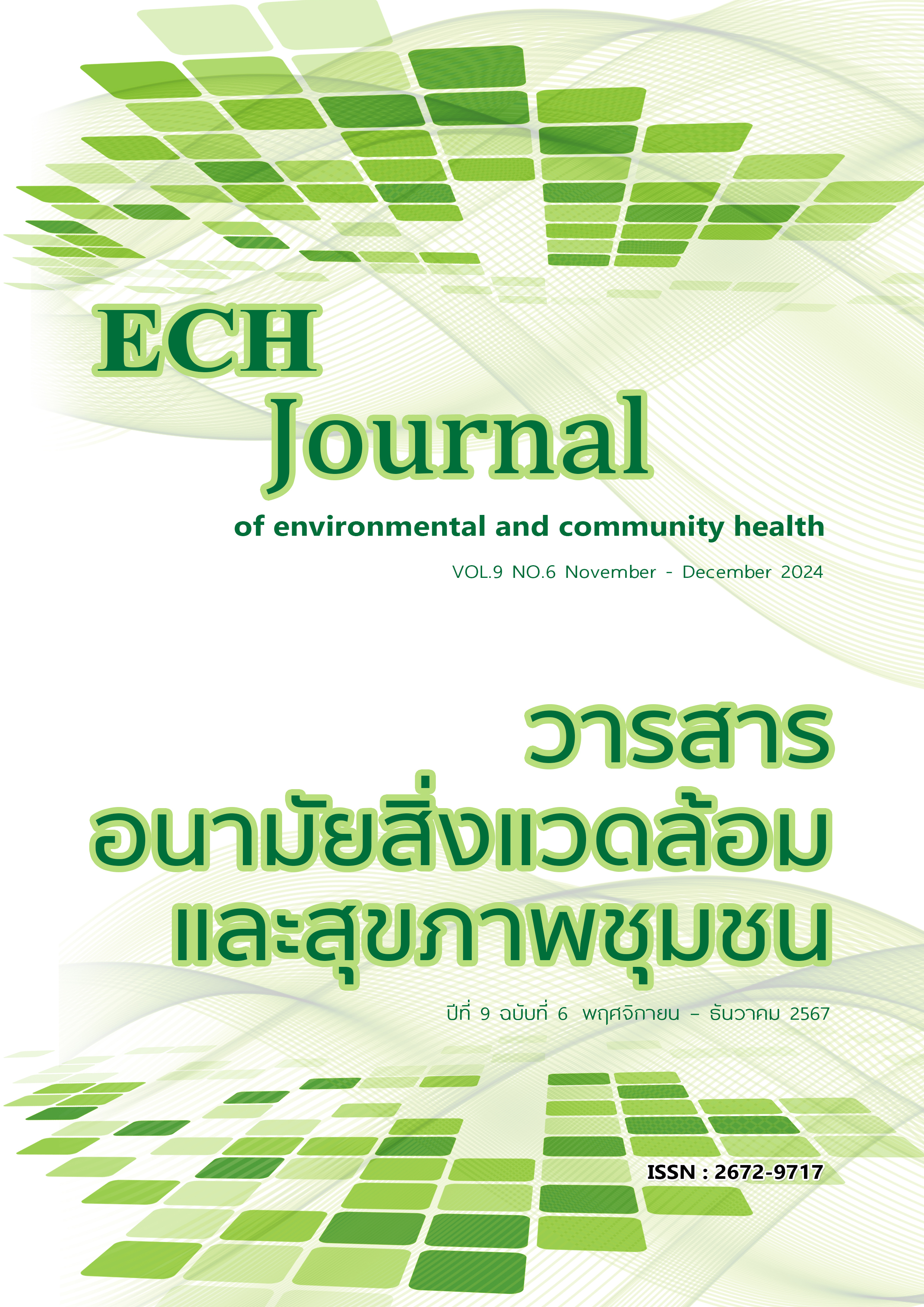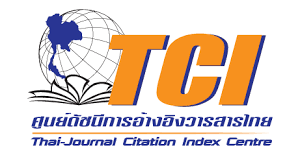การพัฒนาระบบการพยาบาลผู้ป่วยที่มีความเสี่ยงต่อการใส่ท่อช่วยหายใจซ้ำใน 24 ชั่วโมงหลังการได้รับยาระงับความรู้สึกแบบทั่วร่าง
คำสำคัญ:
ระบบการพยาบาลวิสัญญี , การใส่ท่อช่วยหายใจซ้ำ , การบริหารความเสี่ยงทางการพยาบาล แบบจำลองโดนาบีเดียน , การระงับความรู้สึกแบบทั่วร่างบทคัดย่อ
การเกิดภาวะแทรกซ้อนจากการใส่ท่อช่วยหายใจซ้ำใน 24 ชั่วโมง หลังการระงับความรู้สึกแบบทั่วร่าง เป็นปัญหาสำคัญที่ส่งผลกระทบต่อความปลอดภัย คุณภาพชีวิตของผู้ป่วย และทรัพยากรทางการแพทย์ การวิจัยครั้งนี้มีวัตถุประสงค์เพื่อพัฒนาระบบการพยาบาลผู้ป่วยที่มีความเสี่ยงต่อการใส่ท่อช่วยหายใจซ้ำใน 24 ชั่วโมงหลังการระงับความรู้สึกแบบทั่วร่าง และประเมินผลลัพธ์ของระบบดังกล่าว โดยใช้กรอบแนวคิด Donabedian Model ซึ่งประกอบด้วย 3 องค์ประกอบ คือ โครงสร้าง กระบวนการ และผลลัพธ์ การวิจัยเชิงปฏิบัติการนี้ดำเนินการในโรงพยาบาลนครปฐม เป็นเวลา 5 เดือน โดยแบ่งการศึกษาครั้งนี้ออกเป็น 3 ระยะ ได้แก่ 1) การประเมินระบบบริหารความเสี่ยงทางการพยาบาลวิสัญญี 2) การพัฒนาระบบการพยาบาลต้นแบบโดยใช้กระบวนการ 3P (Purpose, Process, Performance) และ 3) การประเมินผลลัพธ์ของระบบที่พัฒนาขึ้น
ผลการวิจัยระยะที่ 1 พบว่าจุดเด่นของระบบบริหารความเสี่ยงในปัจจุบันคือ การเฝ้าระวังผู้ป่วยอย่างใกล้ชิด แต่ยังขาดมาตรฐานในการส่งต่อข้อมูลและการจัดสรรทรัพยากรที่เพียงพอ ระยะที่ 2 ได้พัฒนาระบบต้นแบบประกอบด้วย 1) การเตรียมความพร้อมก่อนการระงับความรู้สึก ได้แก่ แบบฟอร์มประเมินความเสี่ยง (Risk Assessment Form) 2) จัดทำแนวทางการป้องกันใส่ท่อช่วยหายใจซ้ำหลังได้รับยาระงับความรู้สึกแบบทั่วร่าง 3) พัฒนาแนวทางในการส่งต่อข้อมูลระหว่างห้องพักฟื้นและหอผู้ป่วยใน ระยะที่ 3 การประเมินผลลัพธ์พบว่า อัตราการใส่ท่อช่วยหายใจซ้ำลดลงจากร้อยละ 0.15 เหลือร้อยละ 0.05 ความพึงพอใจ (M= 4.78 ,SD=0.03) และความมั่นใจ (M= 4.71,SD=0.06) ในระบบของวิสัญญีพยาบาลและพยาบาลหอผู้ป่วยในหลังการใช้ระบบอยู่ในระดับมากที่สุด
เอกสารอ้างอิง
Steadman J, Catalani B, Sharp C, Cooper L. Life-threatening perioperative anesthetic complications: Major issues surrounding perioperative morbidity and mortality. Trauma Surg Acute Care Open. 2017;2(1). https://doi.org/10.1136/tsaco-2017-000113
Maggiore SM, Jaber S, Grieco DL, et al. High-flow versus Venturi mask oxygen therapy to prevent reintubation in hypoxemic patients after extubation: A multicenter randomized clinical trial. Am J Respir Crit Care Med. 2022;206(12):1452–62. https://doi.org/10.1164/rccm.202201-0065OC
Tanaka A, Shimomura Y, Uchiyama A, et al. Time definition of reintubation most relevant to patient outcomes in critically ill patients: A multicenter cohort study. Crit Care. 2023;27:378. https://doi.org/10.1186/s13054-023-04668-3
สมรัตน์ จารุลักษณานันท์. โครงการวิจัยสหสถาบัน เรื่อง การศึกษาอัตราการเสียชีวิต และภาวะแทรกซ้อนทางวิสัญญีจากการรายงานอุบัติการณ์ในประเทศไทย. กรุงเทพฯ: สถาบันวิจัยระบบสาธารณสุข (สวรส.); 2560.
โรงพยาบาลนครปฐม. รายงานภาวะแทรกซ้อนจากการใช้ยาระงับความรู้สึกในช่วงก่อน ระหว่าง และหลังการผ่าตัด; 2564-2567.
ชลิตา แสงจันทร์. อุบัติการณ์และสาเหตุการใส่ท่อช่วยหายใจซ้ำหลังการให้ยาระงับความรู้สึกแบบทั่วไปในโรงพยาบาลสงขลา. วารสารศาสตร์สุขภาพและการศึกษา. 2565;2(1):15–27.
Choovongkomol C, Ariyanuchitkul T, Choovongkomol K, Tongjapo V. Independent predictors and clinical predictive score of postanesthetic reintubation after general anesthesia: A time-matched, case control study. J Anaesthesiol Clin Pharmacol. 2024;40(1):120–26. https://doi.org/10.4103/joacp.joacp_213_22
Cooper RM, Khan S. Extubation and reintubation of the difficult airway. In: Hagberg CA, editor. Benumof and Hagberg's airway management. 3rd ed. Philadelphia: Elsevier Saunders; 2013. p. 1018–46.e7. https://doi.org/10.1016/B978-1-4377-2764-7.00050-6
Chen S, Zhang Y, Che L, et al. Risk factors for unplanned reintubation caused by acute airway compromise after general anesthesia: a case-control study. BMC Anesthesiol. 2021;21:17. https://doi.org/10.1186/s12871-021-01238-4
Doyle P, Santhirapala V. Quality of life after anesthesia. Anesthesiol Clin. 2019;37(3):507–20.
Cooper RM, Khan S. Extubation and reintubation of the difficult airway. Benumof and Hagberg's airway management. 2013;1018–46.e7. https://doi.org/10.1016/B978-1-4377-2764-7.00050-6
Donabedian A. An introduction to quality assurance in health care. New York: Oxford University Press; 2003.
Landis JR, Koch GG. The Measurement of Observer Agreement for Categorical Data. Biometrics. 1977;33(1):159–174. doi:10.2307/2529310.
Kulp L, Sarcevic A, Zheng Y, Cheng M, Alberto E, Burd R. Checklist design reconsidered: Understanding checklist compliance and timing of interactions. Proc SIGCHI Conf Hum Factors Comput Syst. 2020;10. https://doi.org/10.1145/3313831.3376853
Salas E, Rosen MA. Building high reliability teams: Progress and some reflections on teamwork training. BMJ Qual Saf. 2013;22(5):369–73. https://doi.org/10.1136/bmjqs-2013-002015
De Meester K, Verspuy M, Monsieurs KG, Van Bogaert P. SBAR improves nurse-physician communication and reduces unexpected death: a pre and post intervention study. Resuscitation. 2013;84(9):1192-1196. doi:10.1016/j.resuscitation.2013.03.016
Muller M, Jürgens J, Redaèlli M, et alImpact of the communication and patient hand-off tool SBAR on patient safety: a systematic reviewBMJ Open 2018;8:e022202. doi: 10.1136/bmjopen-2018-022202
Ruhomauly Z, Betts K, Jayne-Coupe K, et al. Improving the quality of handover: implementing SBAR. Future Healthcare Journal. 2019;6(2):s54.





